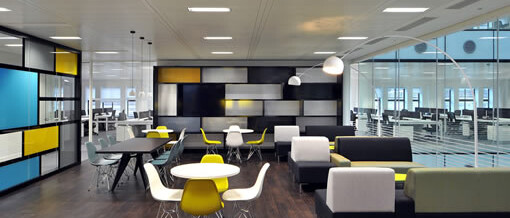
Designing a new office space is becoming more about how people work rather than the work itself.
Activity based workplace
Open plan continues to dominate current office refurbishment, bringing management and staff together in an open space without the traditional closed door offices. Open plan design has proven staff have have better communication and work collaboration, fostering a culture of teamwork. It also saves about a third on office accommodation costs.
However, open plan is now slowly evolving into activity based working. This is where the space is laid out according to business activities rather than by employee or department, so employees do not have an assigned work space. There are areas for meeting clients, researching, working on projects, holding staff meetings or just getting together for an exchange of ideas. The employee simply picks up his/her laptop and moves around the office according to what they are working on.
Proven benefits to staff include:
- Improved work environment and job satisfaction for all
- Staff more likely to share ideas
- Breaks down silos and communication barriers
- Better concentration on a particular task.
Does it suit everyone? It can be a massive cultural change for some workers, and companies need to be mindful that they can now have up to 4 generations of workers in their teams. It would also not suit all industries. For example, law firms require closed door privacy and still use a large paper trail.
Can it work in smaller offices? Most definitely. Our project at WESTPAC Balmain included a new casual zone with joinery pods for staff/client interaction.
Sustainability
Now the norm rather than a trend, designing a sustainable office space can be as simple as allowing more natural light in as well as fresh air via open balconies. This goes hand in hand with the open plan or activity based space where enclosed offices and high partitions no longer line the window areas – resulting in a much more efficient use of space and energy. Another benefit of the mobile office space is that employees would eventually switch to a paperless environment. Changing from following a paper trail to a filing system that is secure and in the cloud is probably one of the most difficult changes some workers would find with this arrangement.
Mobility
Together with the design of the physical ‘at work’ environment is the growing trend of employees working remotely. As the work week generally exceeds 40 hours, longer travel times and a greater emphasis on real work/life balance are resulting in the need for remote work. This has many benefits including increased productivity and employee loyalty. It also caters for a variety of workers, from full-time permanent staff to casuals or people brought on temporarily for project work.
Image source: www.morganlovell.co.uk
ShareMAY



